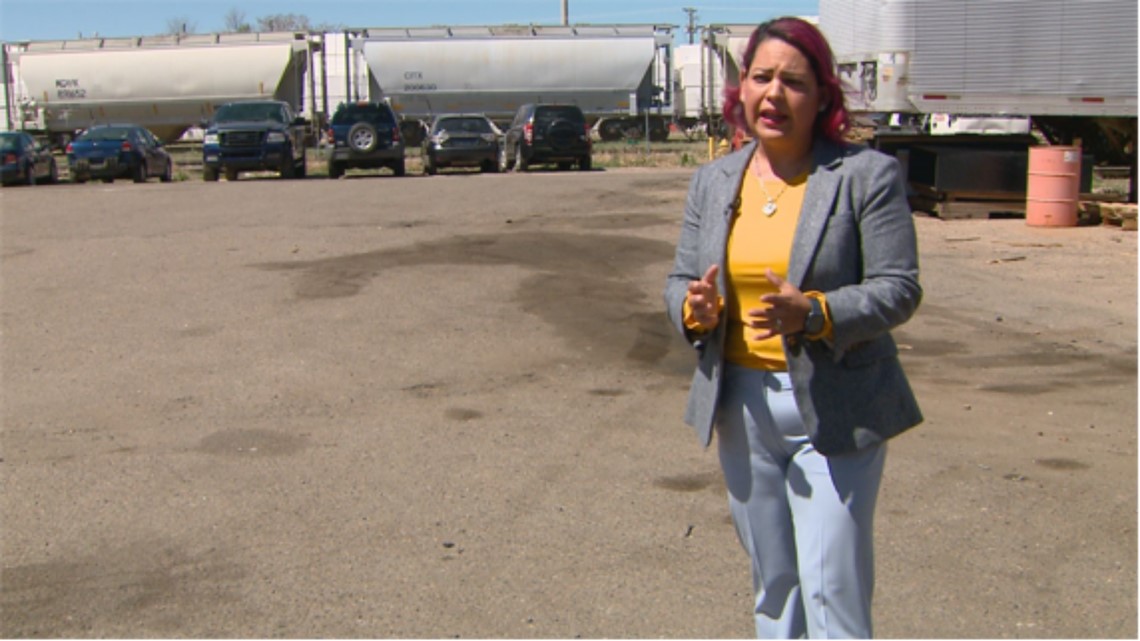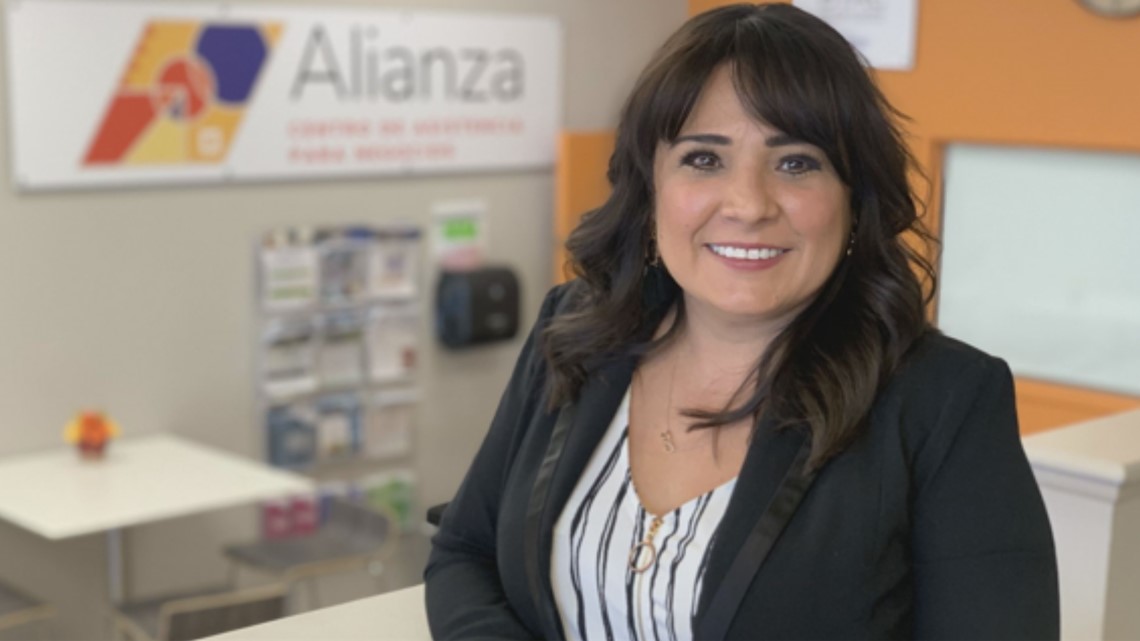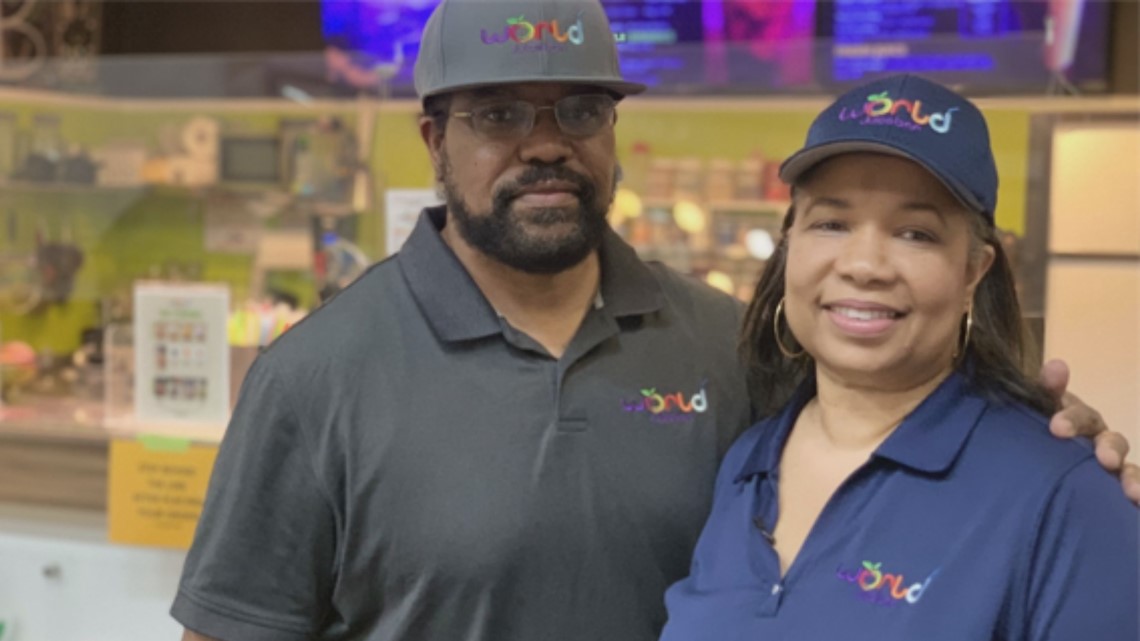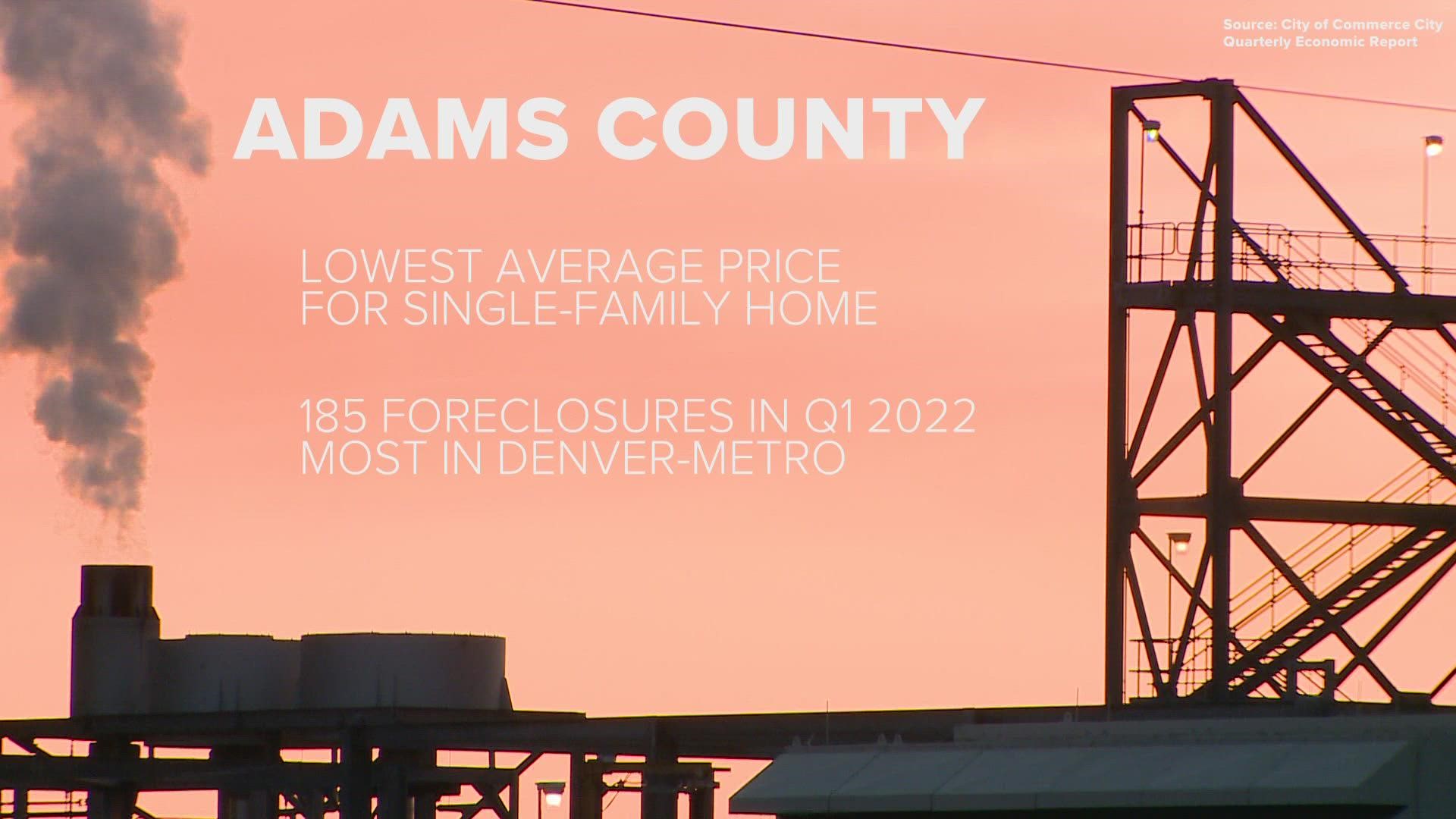In fast-growing Adams County, leaders plan for pressures on housing, development
Adams County is forecast to be one of Colorado's fastest-growing counties by 2050. Some fear that growth might not impact everyone the same way.

For several years, Jesus Dominguez has operated a business repairing construction equipment out of a warehouse in Adams County, but making the rent payment has become more difficult recently.
Dominguez said that his business, JR Enterprises Group, splits the rent for the warehouse, near the Denver County line, with another business and pays $5,000 a month. The last time his rent went up was 2020, and he said his share increased by 30%, or $1,500, he said.
“I pay my rent every month, but sometimes I’m paying that later, you know?” he said.
He said the rent hike has him worried for what might happen with the next renewal at the end of the summer.
“That one … scares me a little, you know?” he said.
Adams County has long been more affordable than its neighbors, but the pressures of growth and development across the Front Range have arrived there, too.
The county is forecasted to be one of the fastest growing in the state by 2050. More people moving there means prices are going up, and so is the inevitable stress that comes with them, according to community activists.


Chapter 1 Shifting demographics
Adams County stretches from Westminster out to the Eastern Plains. Its population is about 520,000 people, after an increase of 78,000 residents over the past decade, according to Colorado State Demographer Elizabeth Garner.
It’s also the first Denver metro county where the majority of the population is people of color, Garner said.
“[It's] now joining the ranks with Costilla, Conejos and Alamosa,” she said.
Adams has one of the state’s largest Hispanic populations and saw the state’s most growth for that group, she said.
Affordability might play a role in the county's growth, but it isn’t just about cost of living, Garner said.
“[In] Denver, half the houses are for rent, not for ownership,” she said. “So if you're wanting to start your life and buy, it's really hard to do that in Denver.”
Another factor: The age group that’s looking to buy a home is also the most diverse.
“You can't do it [buy a home] in Denver,” Garner said. “And that's happened across the decades that our youngest population moves out of Denver, kind of after the age of 30, into other counties simply because Denver really doesn't have the housing."
And Adams County has been fairly “pro-growth,” with a higher median household income than Denver but a lower median home price, she said.
Adams is No. 1 for job growth on the Front Range, followed by Douglas County, Garner said.
"A lot of times people think it’s 'population drives jobs,' and it's very much a balance,” Garner said. “Adams has been able to do both: create the housing stock as well as create the job opportunities."
She said that economic development and population growth should be seen through a two-sided lens.
"There are benefits, and there's drawbacks," she said. "If you plan for it, the likelihood that you're going to have a lot more benefits is up there. It's when you have unplanned growth that things are a challenge and that you're stuck in a situation that you're not ready for."
Chapter 2 The fight for affordability for all


While Adams County might look affordable compared with the rest of the Denver metro area, it's not for everyone, said Maria Gonzalez.
She runs Adelante Community Development, which supports primarily Spanish-speaking business owners and makes sure economic opportunities are there for them.
"I think the opportunity that we have right now is that we see people coming into Adams County because it's affordable,” she said. “But [for] the people that have been here in the county, it's not affordable.”
According to the City of Commerce City’s April Economic Development Report, Adams County reported the lowest single-family detached home price in the last quarter of 2021.
On the other hand, Adams County also reported 185 foreclosures in the first quarter of 2022 – the most out of seven Denver metro areas counties.
In part, the COVID-19 pandemic impacted the resources that Latino business owners and residents had access to, Gonzalez said.
She said county and regional leaders should work together to support entrepreneurs who were forced out of their jobs and are now opening their own businesses.
“Technical assistance is great, but now we need to have a plan,” she said. “This plan needs to be incorporated by the municipalities, by the county, by the regional economic development opportunities, and really sit down with stakeholders to identify growth opportunities for us.”
Dominguez, who graduated from one of Adelante’s programs and has known Gonzalez for years, said that his struggles with rent also extend to his Adams County home.
“Sometimes … don’t have the money to cover all my expenses," he said.
Gonzalez said she hears similar stories at a flea market north of Commerce City, where her nonprofit hosts COVID-19 vaccine clinics.
“People are telling us they're not able to afford the rent,” she said. “Their contracts are expiring, and the new lease is becoming more expensive, or the new lease is probably already rented to someone else. They don't have the same ability to pay for that rent.”


Chapter 3 County preparation
“I think we've known here in Adams County for at least 30 years that with the buildout and the development of DIA, that the growth would eventually come towards Adams County," said Lynn Baca, who represents District 5 – Brighton and parts of eastern Adams County – on the Board of Commissioners.
Baca, who was the first Latina Asian Pacific Islander to be elected to the board, said she remembers when the county was an agricultural hub, adding that there are still active farmers in the area. Her grandfather was once a vegetable farmer in Adams County.
"I think what we're seeing a lot in the county and again across the Front Range is the pressure of development and growth," she said.
Baca said the county made plans to handle that, including updating their "Advancing Adams" plan, which looks at issues including land use, housing, economic development and cultural heritage.
Adams has also invested in road infrastructure, including curb gutters for sidewalks in unincorporated parts of the county, she said.
"I can't stand here and say gentrification hasn't occurred," Baca said. "I don't think we're seeing the swath of displacement that maybe we've seen in other neighboring cities and counties, in particular our neighbor to the south of us, which is Denver."
The county also implemented a COVID-19 grant program to help stabilize businesses and got more than 200 applicants, she said.
Overall, Baca said she believes that plans for handling growth are being executed. She noted that the most pressure for development right now is near the Adams-Denver county line.


Chapter 4 Support for small businesses
In Thornton, Robin Martinez shifted gears when the pandemic began.
As local business administrator with Thornton's Economic Development Office, Martinez was pivotal in opening the Alianza Business Assistance Center, which acts as a co-working space and a resource for people trying to start a business.
"When the pandemic hit, all of our community resource providers that were helping our businesses shut down, went kind of [to] working from home and remotely," she said. "We had business grants [and] we were working with our businesses to help them through the pandemic."
Those grants were not taken advantage of, particularly by Spanish-speaking business owners, so it was helpful that the business center started building relationships with Spanish-speaking businesses three years ago.
"We know gentrification is a real thing, and we want to be able to help them start and grow with the growth rather than feeling like they need to leave," she said. "... We've seen so much growth here in Thornton on the small businesses, especially minority-owned businesses, because we still have that affordability and the opportunity to house small businesses, either for starting or maybe they just want to keep this as a small entity."
The business center has large conference rooms that people can reserve and specialists to help business owners in a one-on-one setting.
Over the past year, Martinez estimates they've seen about 1,500 people.
"We wanted to be ahead of the curve,” she said. “We wanted to make sure that businesses had a place to turn as things change because communities are going to change, and they're going to change in different ways.”


Chapter 5 Perseverance
Tucked away inside Westminster's H-Mart, a Korean-American supermarket chain, customers look to quench their thirst with a smoothie.
"Green Goddess!" David Sweet called out when an order was ready.
David's wife, Denise, warmly greeted customers, as she does every day at their shop, World Juice Bar.
The Sweets spent years going from festival to festival as a mobile vendor before settling on a permanent space.
“You know, we were looking for someplace where we can actually grow and be a part of our community," Denise Sweet said.
They initially looked in the Denver area but found that the rent was too high for the size of the space they needed, with some caveats.
“One space we looked at, it was actually connected to a gas station," Denise said. "In that case, your costs are going to be higher. So add on the $5,000 rent, plus being next to the gas station. Now you have higher insurance costs."
They landed at West 92nd Avenue and Sheridan Boulevard in Westminster and have been cordial with other small businesses there.
"So if you have that network, you're going to grow, and you're going to like the experience," Denise said. "If you're in a bigger city and you have a lot of paperwork, there's a lot of fees."


The Sweets have found success with their location. In their hiring, they employ youth from the community, work with unemployment programs and emphasize diversity.
"A lot of our employees speak different languages," Sweet said.
They also said growth in Adams County might be happening too fast.
"I feel that state and local governments, they really need to have better relationships with developers because a lot of the developers don't have a vested interest in the community," Denise said.
"They really need to make it personal to say, ‘Hey, we need you to make sure that we have businesses that represent these communities, provide a variety of services, not the cookie-cutter businesses that we used to always see,’ right?" she said.


Back near the Adams-Denver county line, Dominguez said he hopes his rent stays where it is so that his business can do the same.
“I tell to the community to try to survive right now, you know?" he said. "Right now, it’s a hard time for everybody. Not only for us."
SUGGESTED VIDEOS: Colorado real estate market
MORE WAYS TO GET 9NEWS
Subscribe to our daily 9NEWSLETTER for top stories from 9NEWS curated daily just for you. Get content and information right now for can’t-miss stories, Next and Broncos content, weather and more delivered right to your inbox.
DOWNLOAD THE 9NEWS APP
iTunes: http://on9news.tv/itunes
Google Play: http://on9news.tv/1lWnC5n
HOW TO ADD THE 9NEWS APP TO YOUR STREAMING DEVICE
ROKU: add the channel from the ROKU store or by searching for KUSA.
For both Apple TV and Fire TV, search for "9NEWS" to find the free app to add to your account. Another option for Fire TV is to have the app delivered directly to your Fire TV through Amazon.


